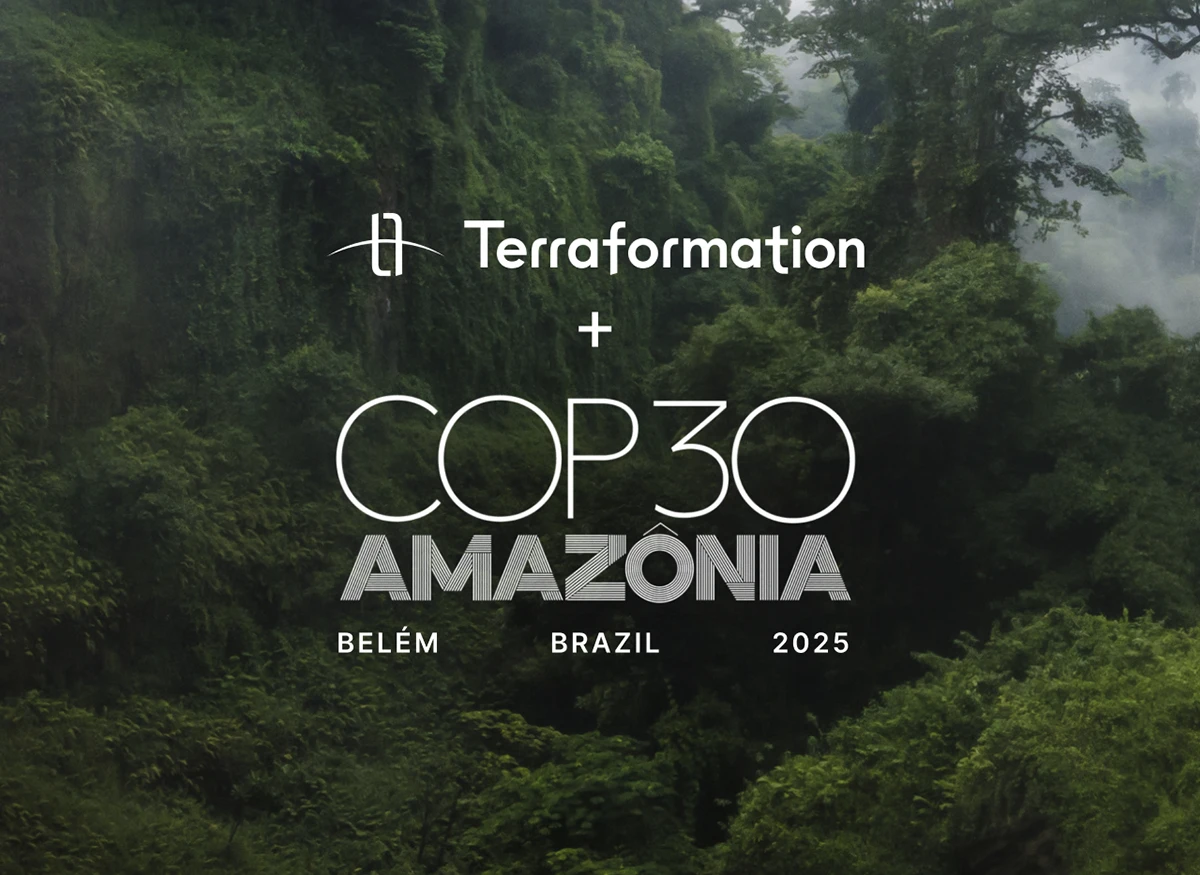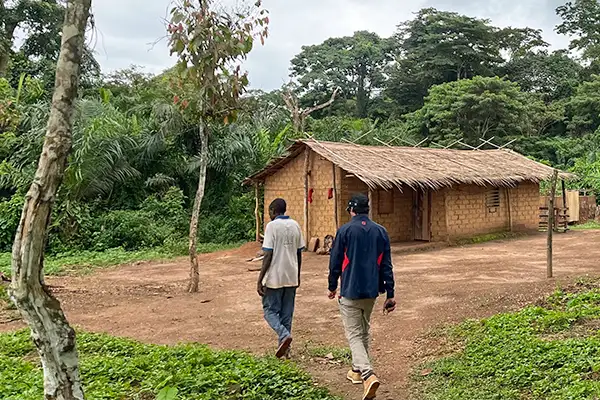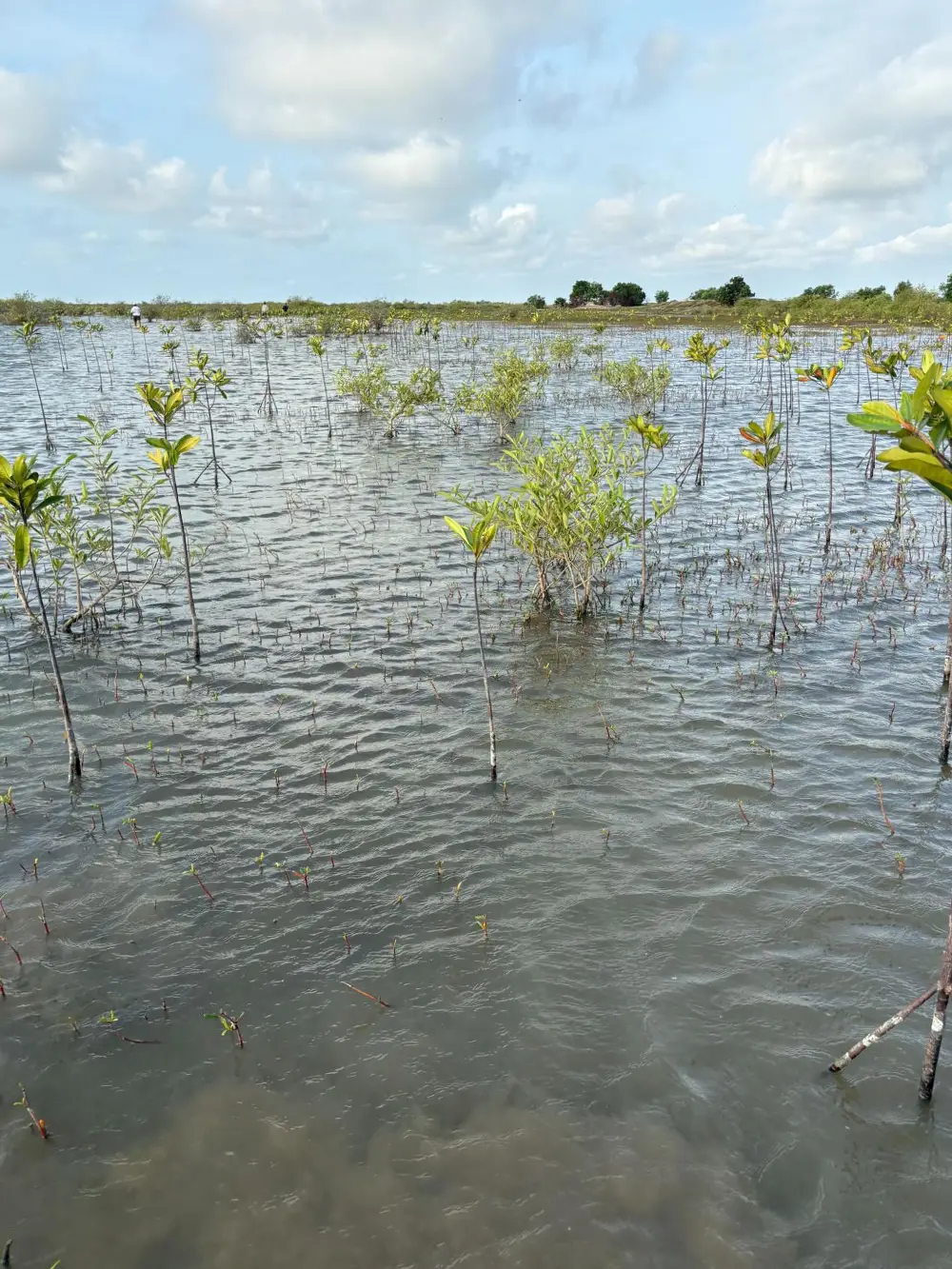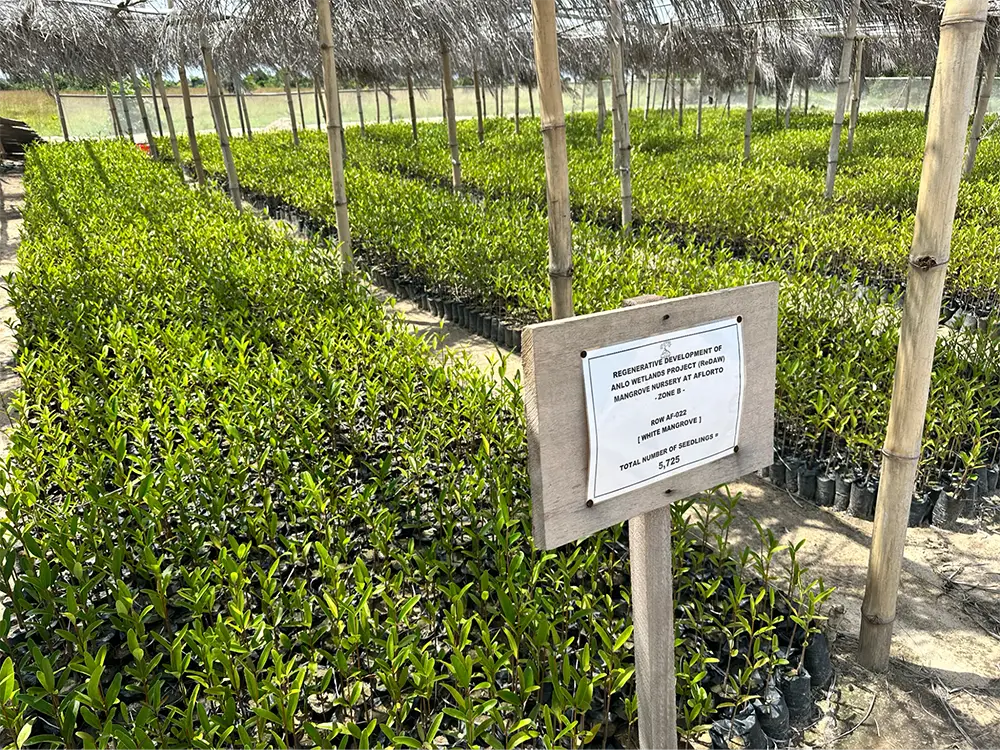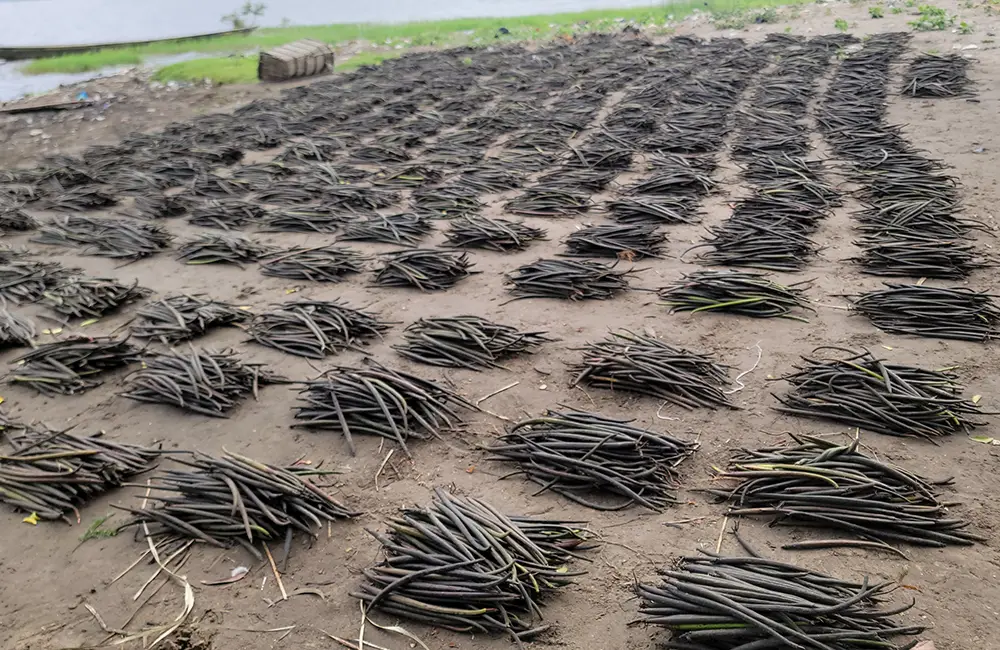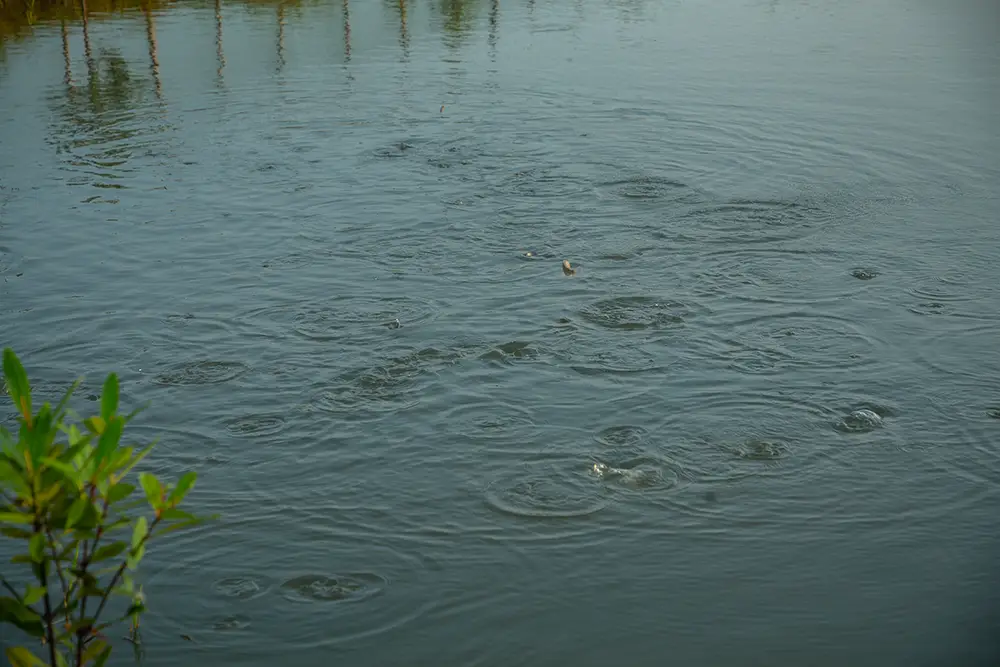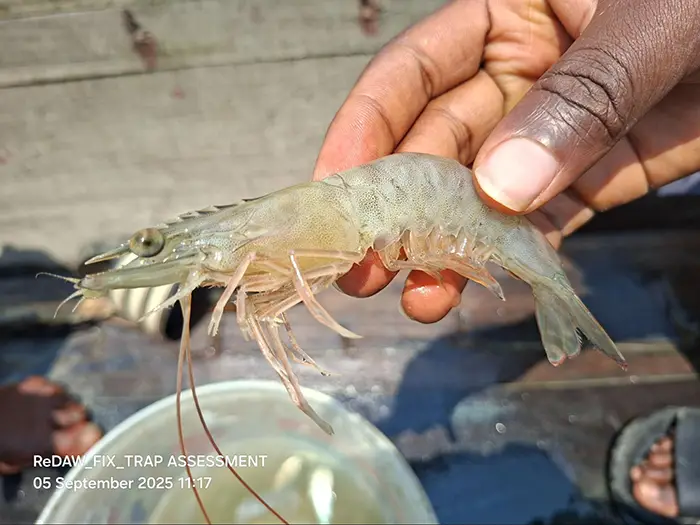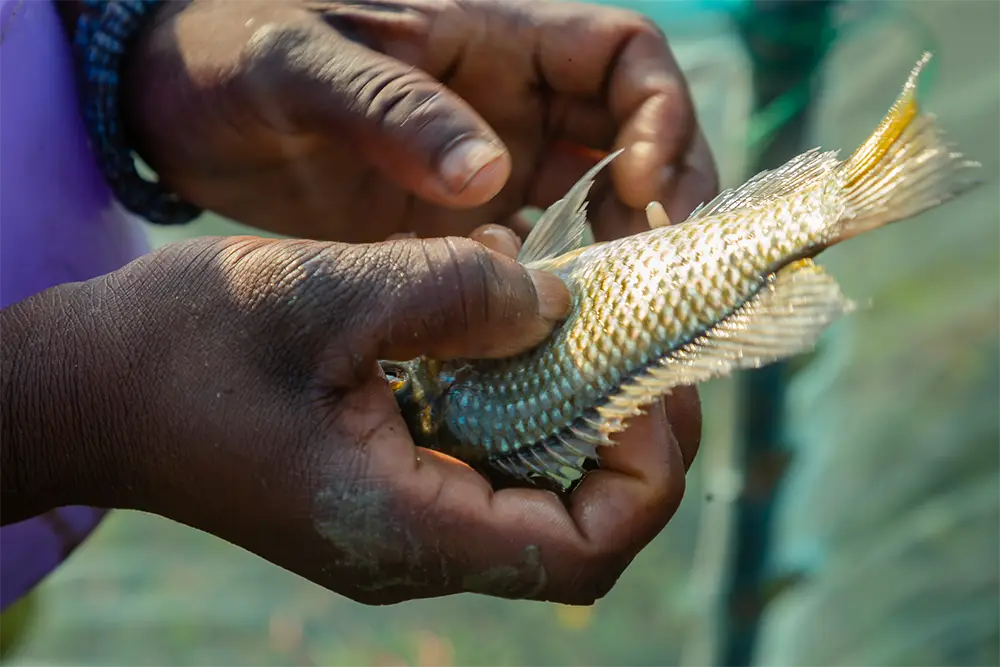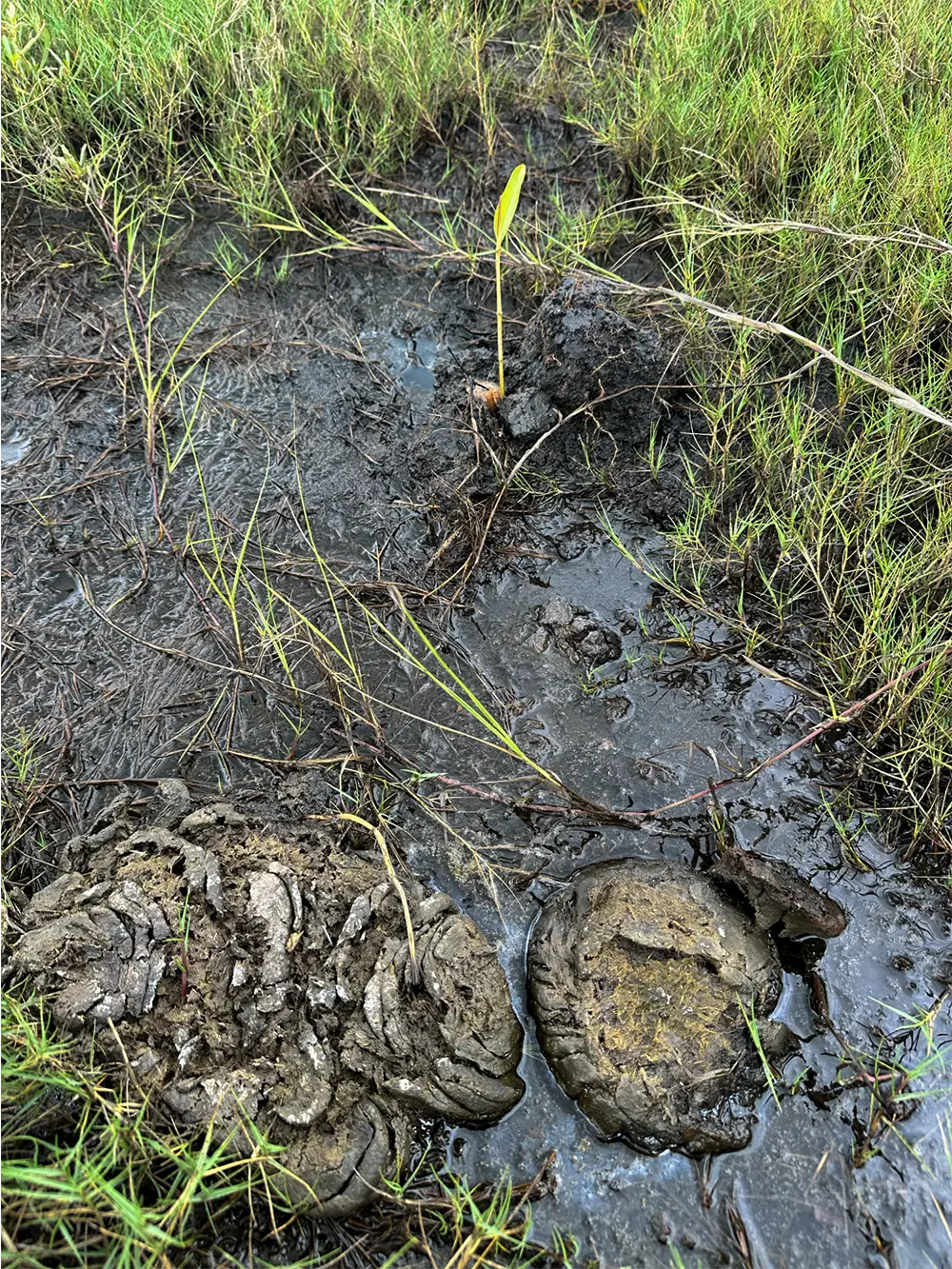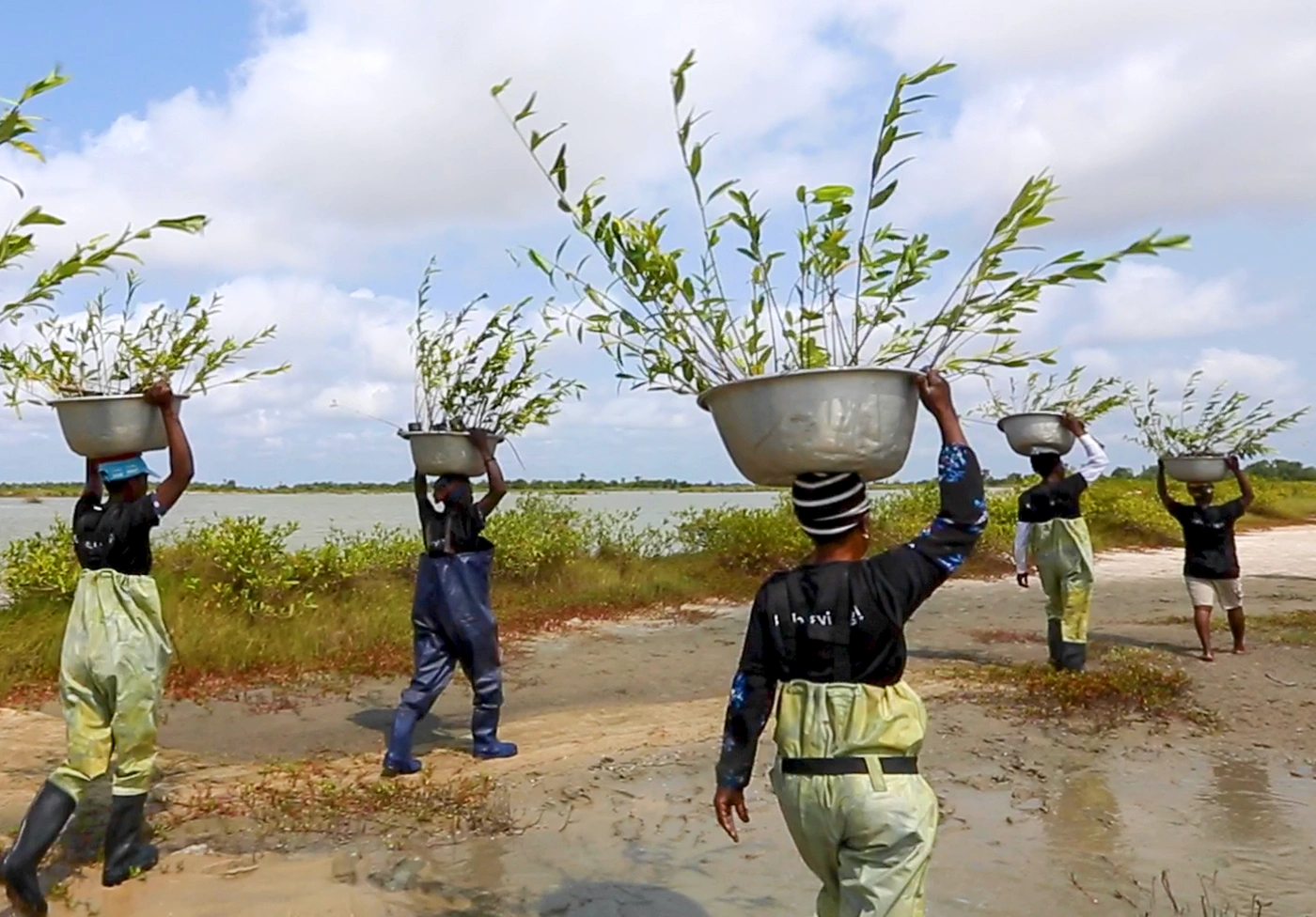Restoring Life in the Keta Lagoon: Progress from the Keta Blue Project
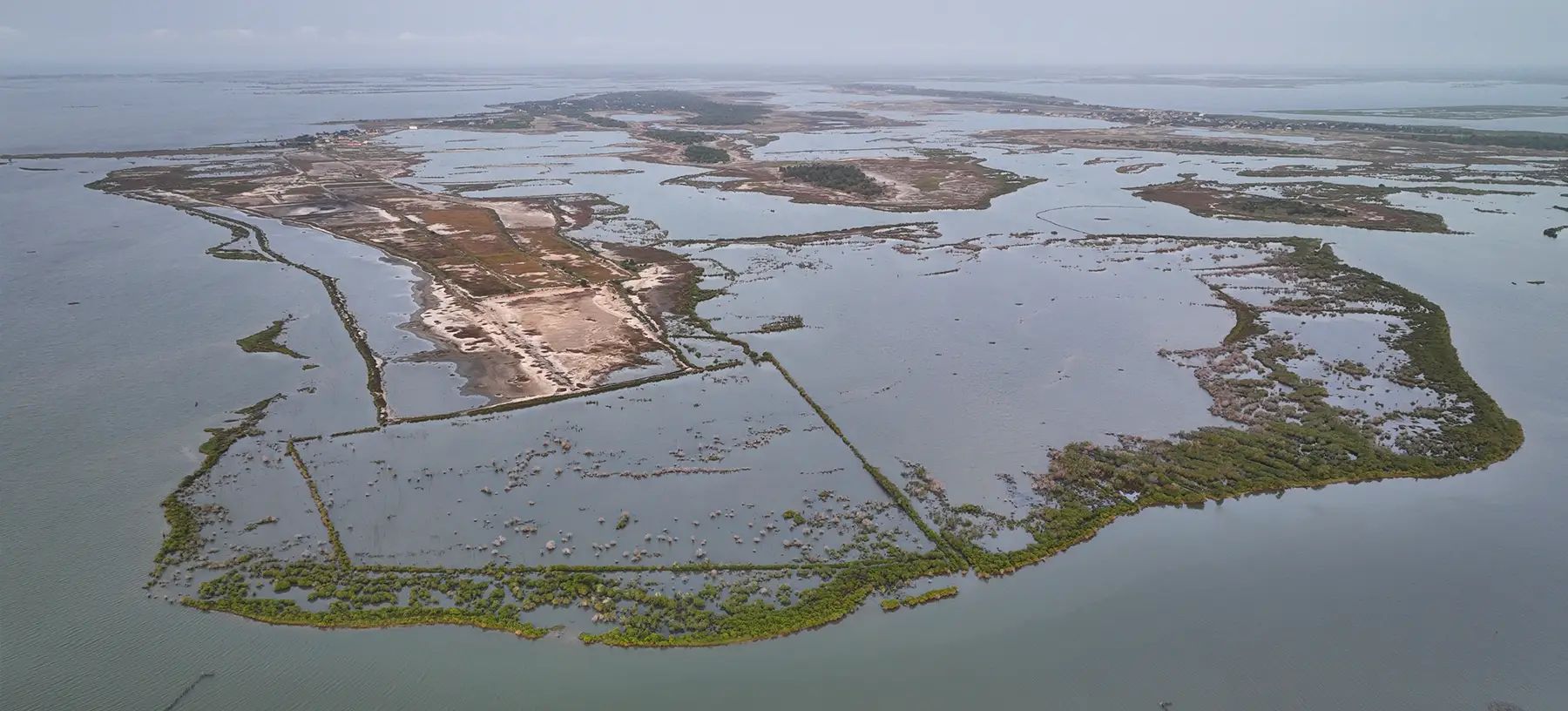
On Ghana’s southeastern coast, where the Volta River meets the Atlantic Ocean, lies the Keta Lagoon Complex Ramsar site. It is the country’s largest lagoon system, covering more than 1,200 square kilometers of wetlands, tidal creeks, mangrove forests, and small islands. For generations, it has been a vital source of food, income, and cultural identity for the surrounding communities.
Over the past few decades, however, the lagoon has come under increasing environmental and socioeconomic pressure. The region faces hyper-salinization of soils, seawater intrusion into freshwater aquifers, coastal erosion, and flooding in nearby communities. Fishery depletion and plastic pollution further strain the lagoon’s delicate ecosystem. Mangroves – which serve as natural buffers that protect coastlines, sustain biodiversity, and enhance water quality – are being degraded as communities turn to them for firewood and short-term income.

Today, that story is changing. Through the Keta Lagoon Blue Carbon Project – or Keta Blue for short – local communities, forestry partners, the Forestry Commission of Ghana, and our restoration teams at Terraformation are working together to restore mangrove forests and strengthen livelihoods across the region.
Our Q3 monitoring visit and work with the ReDAW team captured that progress in the field and the renewed sense of possibility that is taking hold at the lagoon.
A Forest is Emerging
This year, a total of 727 hectares have been restored with red mangrove (Rhizophora racemosa and Rhizophora harrisonii), white mangrove (Laguncularia racemosa), and black mangrove (Avicennia germinans) species planted across three communities. This brings our total to 1,160 hectares planted since August 2024 (figures as of October 24, 2025).
At the nurseries constructed for this project, 453K mangrove seedlings of white and black mangrove species have been grown and planted during this year's planting season. Complementing this effort, over 1.1 million red mangrove propagules were collected this season, ensuring a steady supply of diverse and viable native planting materials to sustain ongoing restoration activities.
Sustainable Livelihoods for Local Communities
Restoration at Keta Blue is as much about people as it is about ecosystems. This quarter, more than 240 community members were employed across nurseries, planting zones, and monitoring teams, with over half of them women.
Additionally, cashew trees planted along a 2.2-kilometer strip in one of the communities are growing well. A survival assessment conducted in mid-August recorded about 89 percent of plants thriving. Following the first rains in late September, the team applied poultry manure to support continued growth.
Reviving the mangroves also revives opportunities for local aquaculture, as these ecosystems provide estuarine habitats that serve as breeding and nursery grounds for fish, crabs, shellfish, and other aquatic life. In the 600-person village of Fiaxor, community members are preparing fish ponds for stocking next quarter, reinforcing the pond dykes and conditioning the water to support fingerlings that will soon be raised in a new local nursery pond. Meanwhile, a beekeeping program will install more than 20 hives within black mangrove zones, where nectar-rich blossoms produce distinctive mangrove honey and offer a new source of income.
Together, these job creation and livelihood initiatives are easing pressure on mangrove and reed harvesting while providing dignified, climate-resilient work that aligns with ecosystem restoration.
Community Stewardship and Shared Benefits
Each restoration community in the Keta Blue project manages a Community Trust Fund (CTF), a locally governed system that channels a portion of project revenue into community-driven development. The funds are made up of project contributions tied to restoration milestones, a share of landowner revenue, and future profits from sustainable enterprises like aquaculture and mangrove honey. These funds finance projects that improve daily life and strengthen long-term resilience — from education to healthcare, infrastructure, and community programs.
Each CTF has an elected board (inclusive of women and youth), transparent bank accounts, and public reporting, ensuring accountability and collective decision-making. These governance safeguards help ensure funds support the community and build trust around benefit sharing.
The CTFs are now active in the first three participating communities, and two of them issued funds this quarter. In Atito, the community voted to complete a long-stalled local health clinic. In Aflorto, funds supported new canopies and chairs for public gatherings, school supplies for students, and the construction of a 12-unit toilet facility. Fiaxor is saving toward building a fence wall around its school.
These systems of community stewardship are not just about sharing benefits, they are building the social foundations of permanence that make ecological restoration last.
Biodiversity & Ecological Outlook
Situated within the Keta Lagoon Complex Ramsar site, the project operates in a designated area of international importance for the preservation of vital habitats. As mangrove restoration progresses and expands, the initiative expects to enhance the health and connectivity of local ecosystems: providing shelter for fish and crustaceans, nesting grounds for birds, and improved water quality that supports diverse aquatic life.
Early biodiversity monitoring has recorded 27 bird species and over 1,700 individual birds, including cormorants, whistling ducks, herons and egrets, along with eight fish species such as tilapia, mullet, and catfish. Species composition varies seasonally, with bird and fish populations fluctuating between wet and dry periods and along migratory pathways.
As the young mangroves continue to take root, the team anticipates that clear biodiversity trends will emerge in the coming years as the forest matures and ecosystem conditions stabilize.
Staying the Course
Like any living system, the lagoon continues to face its challenges. Cattle still wander through young planting sites (at least their presence adds natural manure!), pests threaten a few seedlings, and shifting rainfall patterns disrupt planting schedules. But the team’s steady, adaptive approach keeps restoration on track and growing stronger each season.
The next quarter will focus on replanting in sparse zones, operationalizing aquaculture and beekeeping projects, and deepening community engagement through ongoing training and governance support.
Each quarter brings new data, deeper understanding, and stronger local leadership. The mangroves are taking root, the lagoon is recovering, and the people who depend on it are guiding its restoration.
“Lasting restoration depends on people as much as on trees. When communities have a voice, secure land rights, and a dignified way to provide for their families while sustaining the environment, the forests they care for can truly thrive.” - Annie Thompson, Social Impact Manager
Join Us in Restoring the Keta Lagoon
The full Q3 monitoring report is now available exclusively to funders through Terraware.
To learn more about the Keta Lagoon Blue Carbon Project - Ghana or to explore opportunities to secure future carbon credits, contact the Climate Impact team at impact@terraformation.com.




